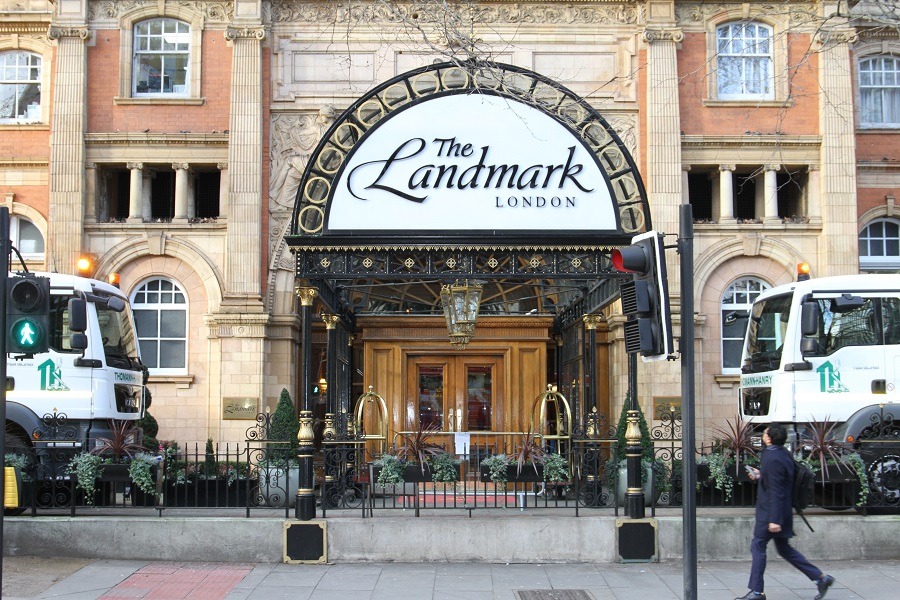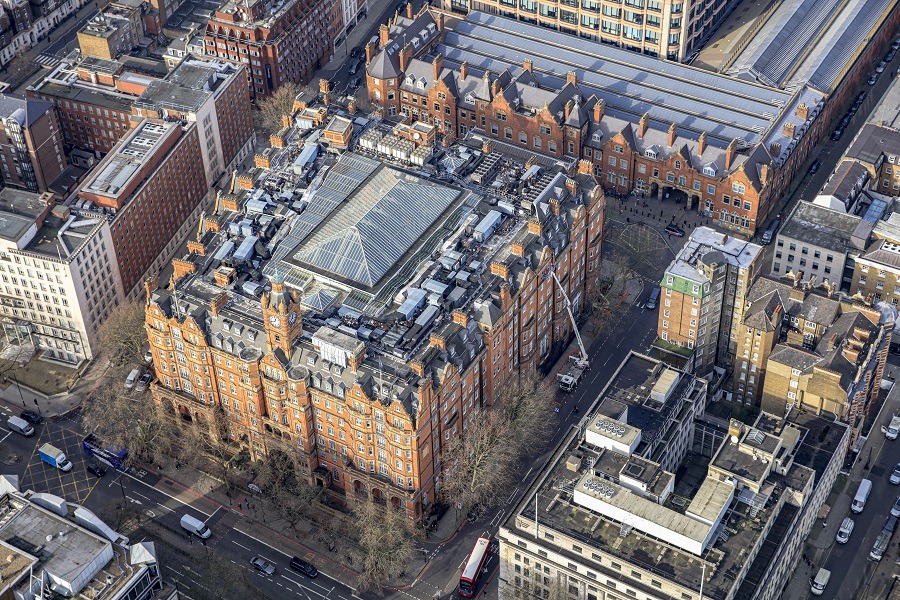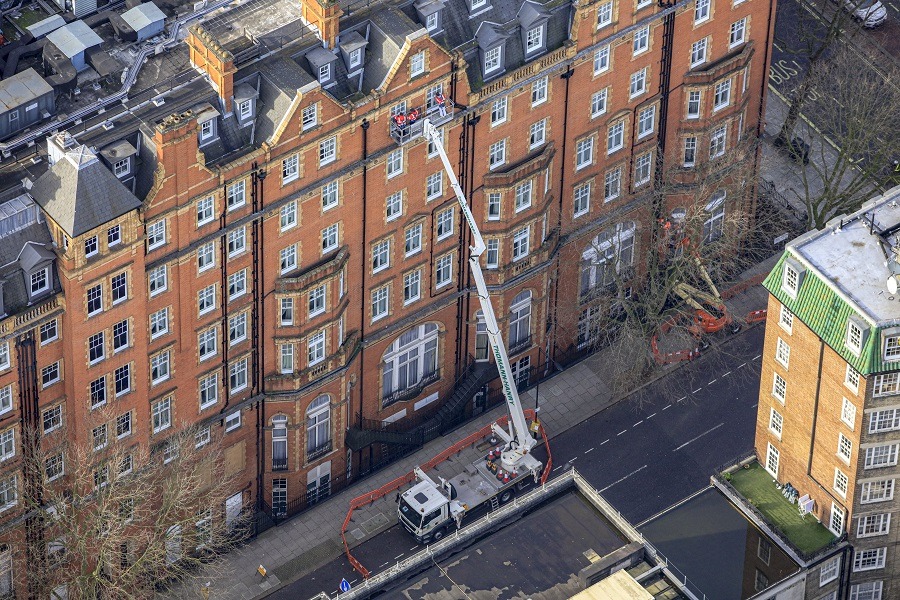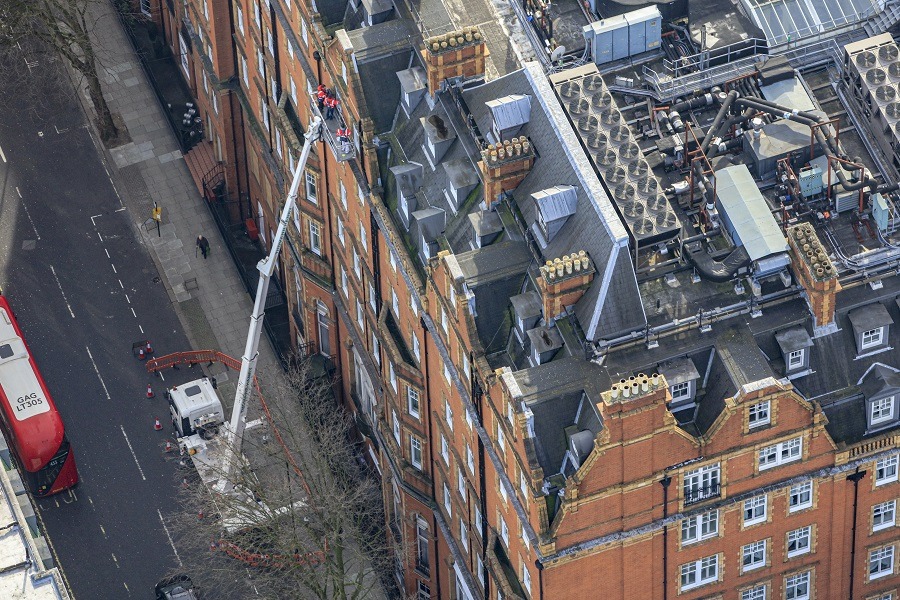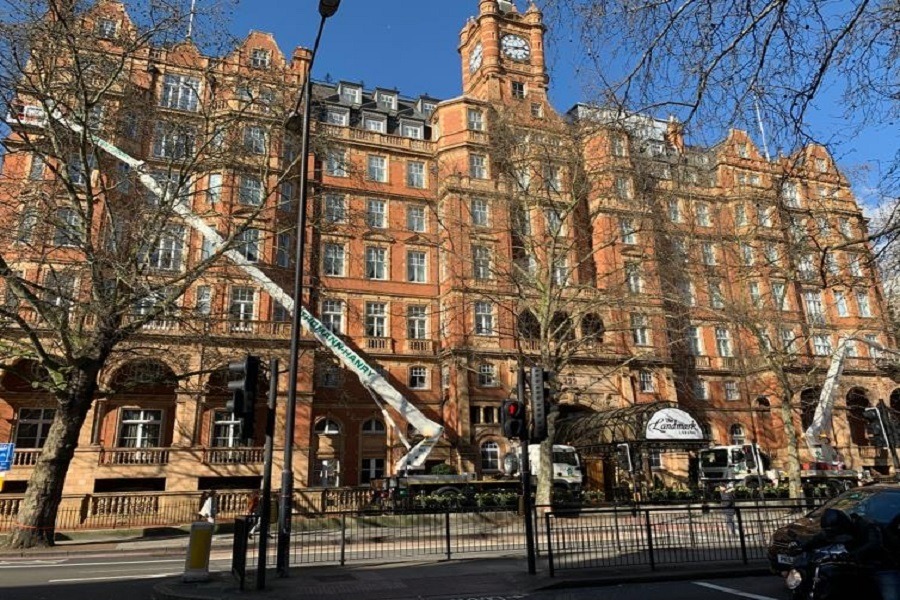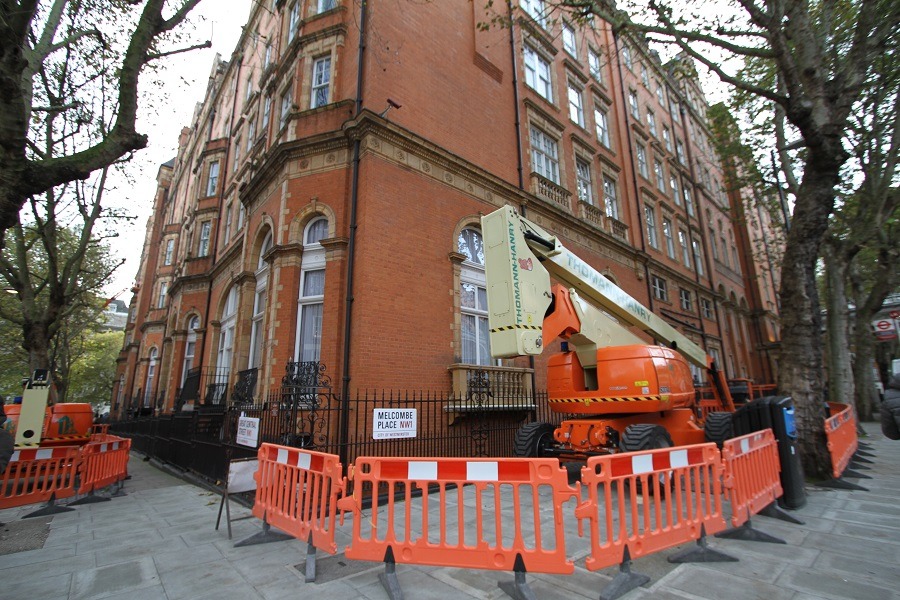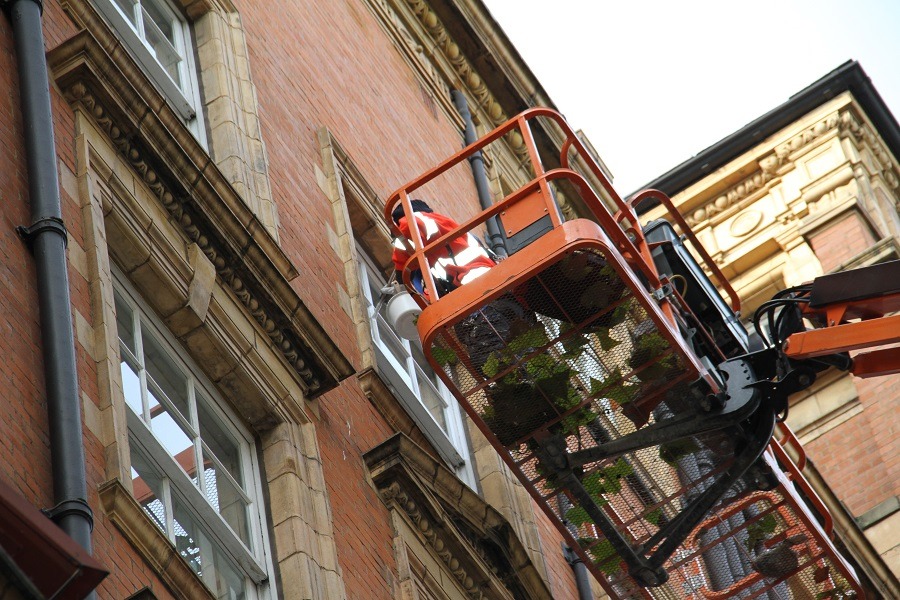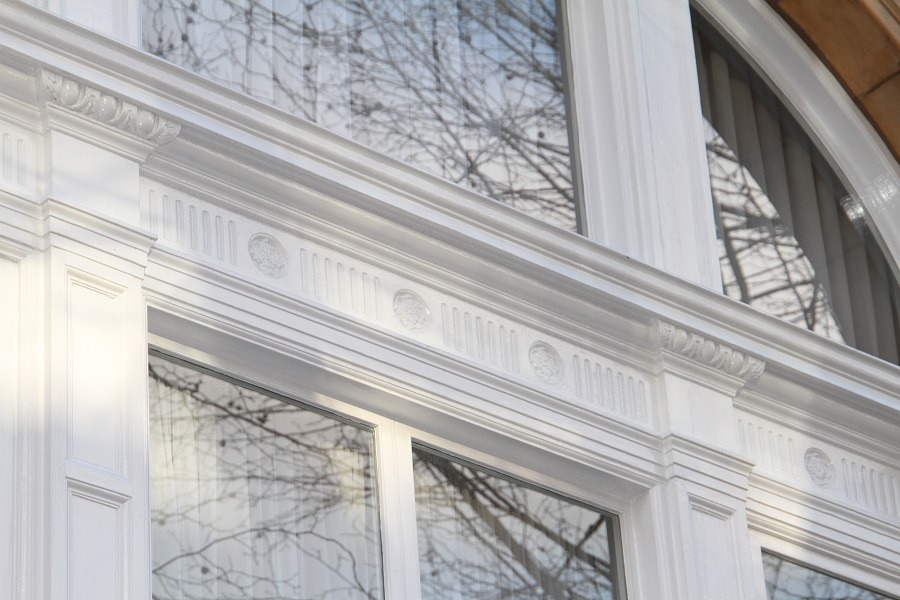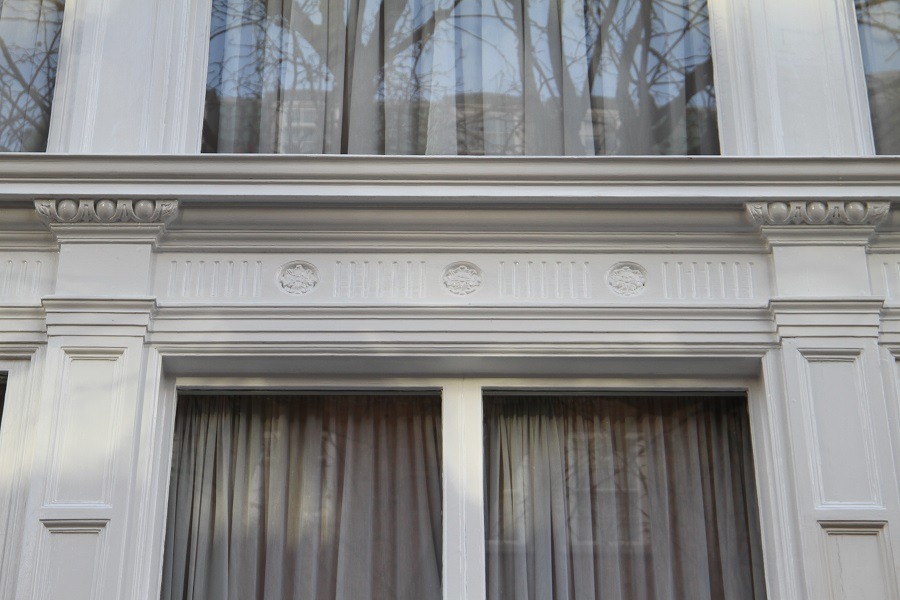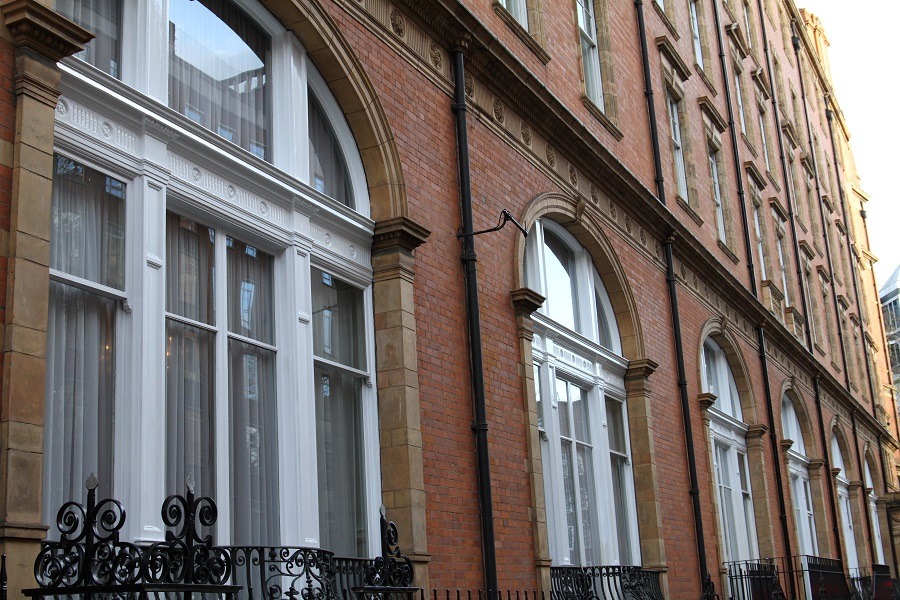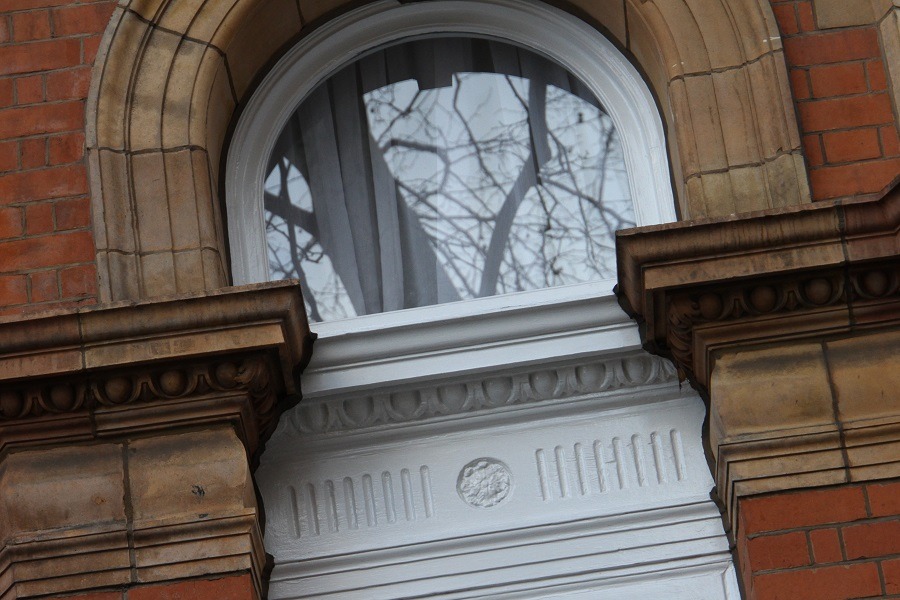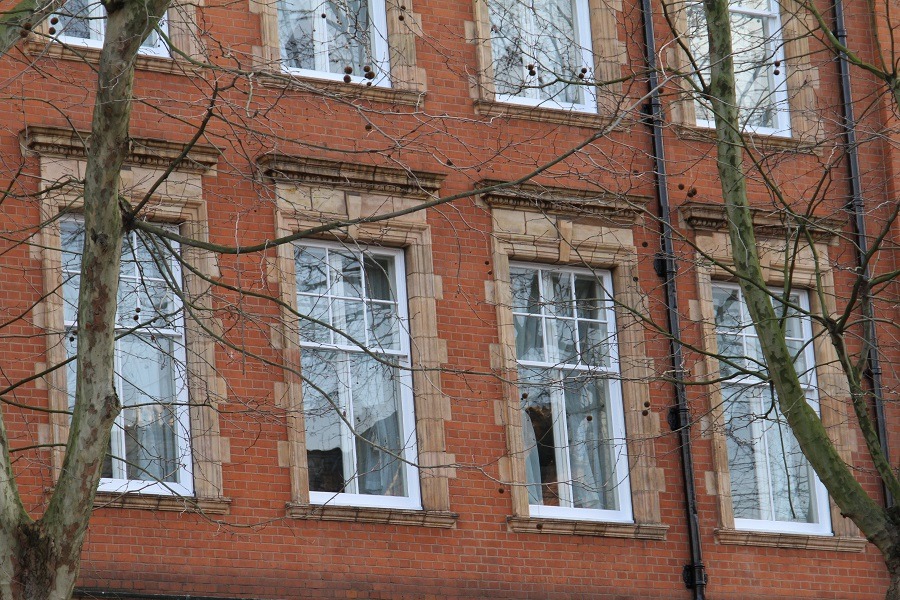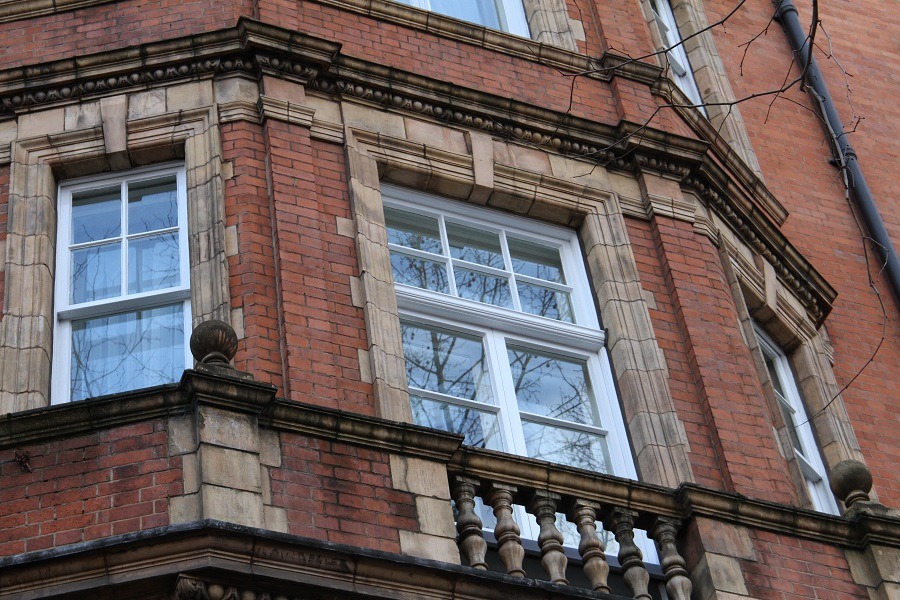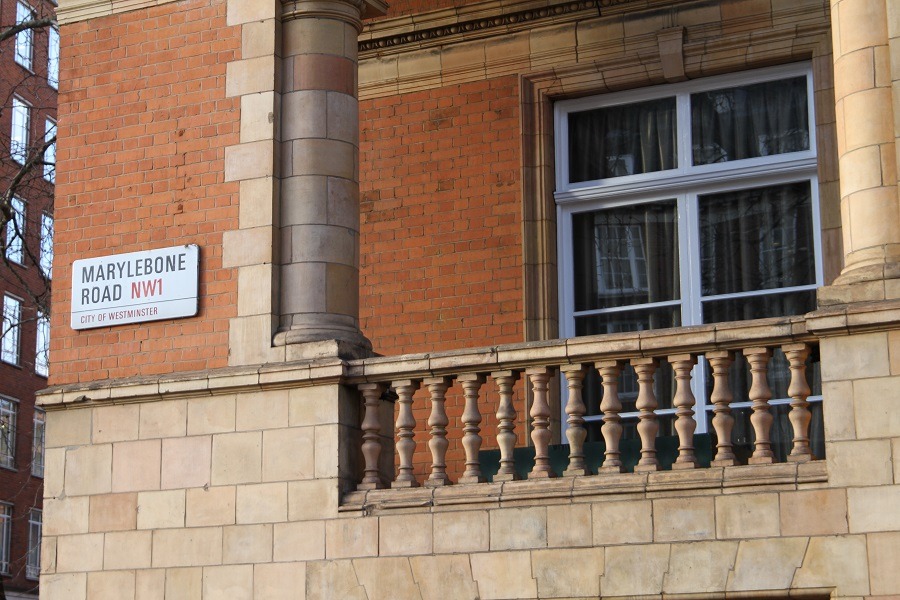The Landmark hotel
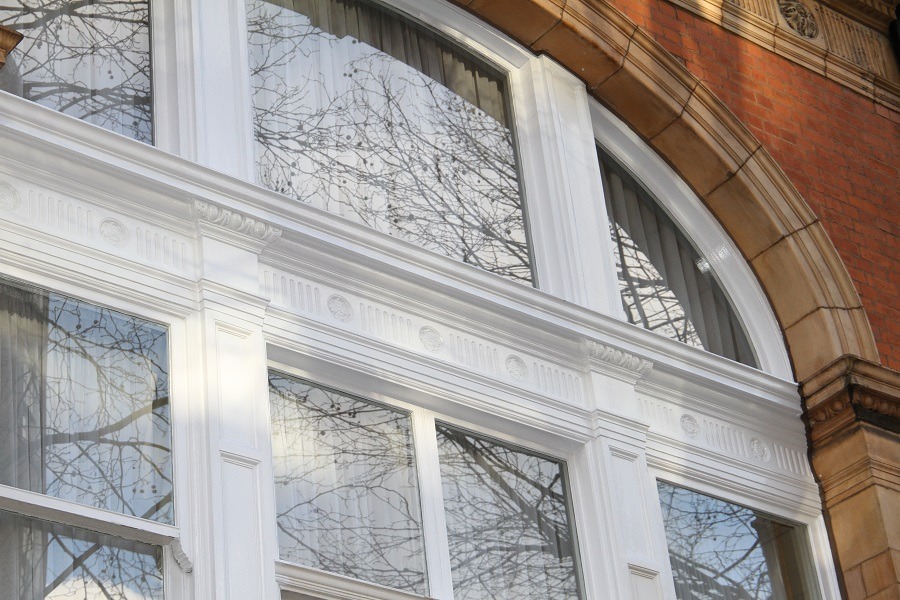
A member of the Leading Hotels of the World, Marylebone’s Landmark London hotel welcomes guests with dazzling 5-star luxury. In late 2019, London-based restoration specialists Thomann-Hanry® were commissioned to breathe new life into this magnificent grade II listed building. As painting contractor only, the project represents one of the company’s biggest and most important assignments to date, restoring one of London’s most historic railway hotels.
A thousand windows, zero scaffolding – Thomann Hanry® redecorate London’s original Landmark.
History
The vision of business magnate Sir Edward Watkin, the hotel dates back to an era of spectacular hotel development in the late 19th century, powered by the explosive growth of Britain’s railways. Opening in July 1899, the Great Central Hotel was designed by renowned architect Col. Robert Edis, with a brief to surpass the grandeur and opulence of the Savoy and Hotel Cecil, which had opened in 1895 and 1896 respectively. Admired for his previous work, which included the ballroom for the Prince of Wales at Sandringham, Edis rose to the challenge, designing the hotel around the Winter Garden – a soaring courtyard atrium, directly into which guests would arrive by horse and carriage.
The building in detail
The building featured a clock tower, lending it an aura of civic authority, as well as more outré innovations, such as a rooftop cycle track for the use of guests looking to work off some of the excesses of high living. The hotel’s steeply pitched roofs, ornamental tracery and impressive façades are outstanding examples of Gothic Revival architecture, favoured by Edis in contrast to the art deco and neoclassical styles more prevalent at the time.
Apart from spells as a convalescent home for officers during both world wars, the Great Central established itself as one of London’s pre-eminent hotels throughout the first half of the twentieth century, before being bought by the London and North Eastern Railway Company and repurposed as office space in 1945. In 1988 it was acquired by Kentaro Abe, who had found fame and fortune as Japanese pop star Sen Masao. Construction work started on a re-born hotel in 1989, opening as The Regent four years later under the ownership of the Four Seasons Group. Subsequently bought by the Lancaster London Hotel Company, it was re-launched as the Landmark London Hotel in 1995.
Specialist window painting works
In classic Gothic Revival style, the design of the building features serried ranks of windows – over a thousand of them. It was this aspect that the hotel operators identified as the key to unlocking an external restoration of the Landmark in 2019. Commissioned as painting contractor, Thomann-Hanry® were tasked with redecorating all windows, window frames and sills, as well as over 50 doors and louvres. The project also encompassed around a mile of ornate metalwork, including the two main canopies, in addition to varnishing the main entrance woodwork and painting perimeter railings, balconies, downpipes and the front entrance canopy steelwork frame.
Before a single brush stroke of paint was applied, Thomann-Hanry® undertook a meticulous preparatory survey to ensure best practice and anticipate any unforeseen problems. With a building of this age, it was also essential to establish that no deleterious substances were present, such as lead or arsenic in the paintwork. For example, if lead is identified in the existing paintwork, all works are required to conform to Control of Lead At Work (CLAW) regulations for its safe and compliant disposal.
Once the project was given the green light, the Thomann-Hanry® team of painters and decorators toiled for some 20 weeks, enduring storms and the very worst that a tempestuous British winter had to throw at them. As a company renowned for its façade gommage® work, carried out from Mobile Elevated Work Platforms, Thomann-Hanry® were a perfect fit for the Landmark’s management team – the use of MEWPs avoiding the costly and slow alternative of shrouding the building in unsightly scaffolding. In this way, the Landmark was able to operate entirely as usual throughout the works, with neither guests, staff, nor passers-by inconvenienced by the latticework of scaffolding that normally accompanies redecoration projects of this scale.
Reflecting on the project, Thomann-Hanry® Painting Supervisor Russell Butler commented, “When we first found out we were going to start work on the Landmark Hotel I was very pleased, as it’s a building steeped in history. It’s been one of the most satisfying jobs we’ve worked on and we’re very proud of the high standard of work that we have delivered, ensuring that the quality of the work matched the high standards of the hotel. Obviously few jobs run quite as smoothly as you like, but this one did – with good planning and communication between us and the hotel meaning minimal room closures and disruption to the hotel.”
His views were borne out by Keith Price, the Landmark’s Chief Engineer,
“Painting the exterior wood & metalwork on a 6 storey five stars grade II Listed building in the busy Marylebone area has not been an easy task. The combined complication issues of occupancy and parking restrictions, compounded by adverse weather conditions, have been managed extremely well between the Hotel management team and Thomann-Hanry®. The quality of workmanship, attention to detail and co-operation has remained exemplary. I would highly recommend Thomann-Hanry® to any company considering an alternative to the traditional scaffolding approach.”
Completed in early 2020, this vast undertaking of painting and redecoration has transformed the outward appearance of the Landmark, providing a window on how this grand dame of Marylebone first looked, over a century ago.
Stunning aerials featuring our team of painters and decorators whilst working at the Landmark London.

